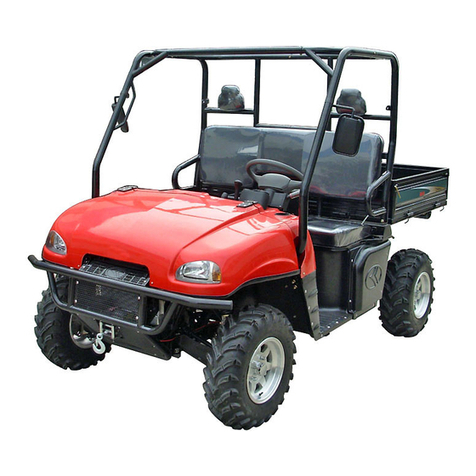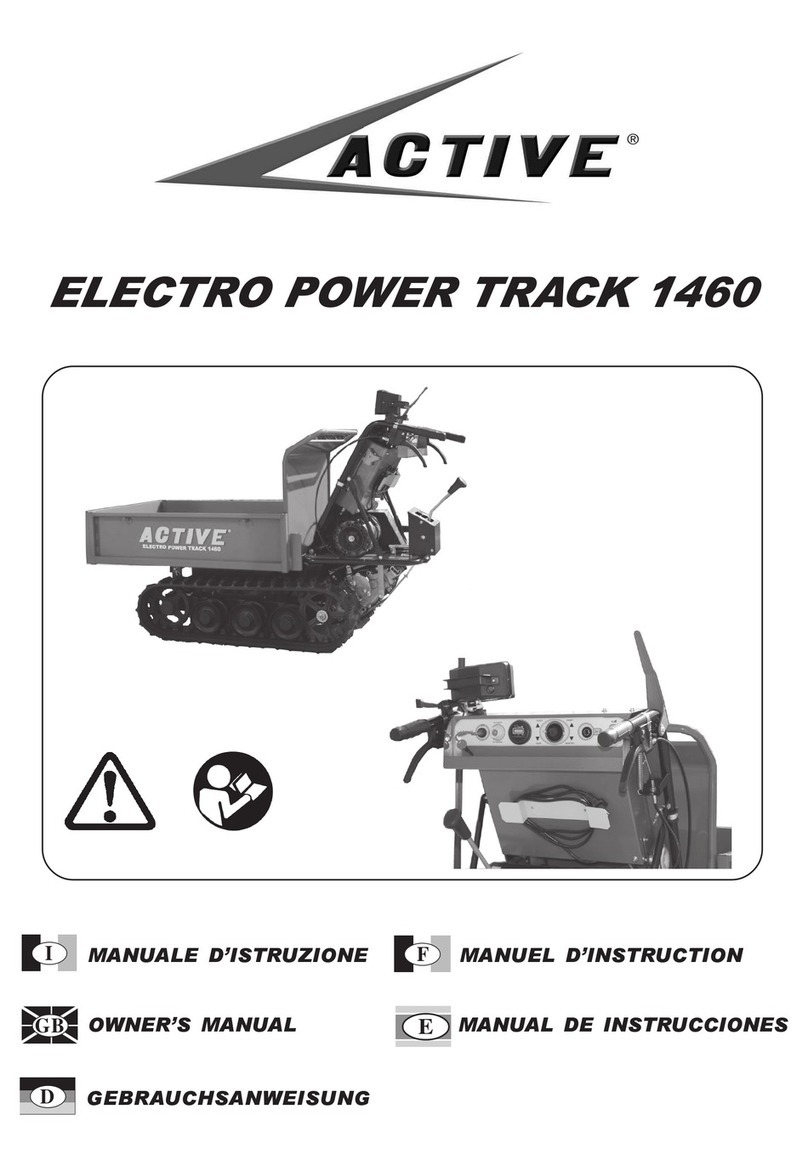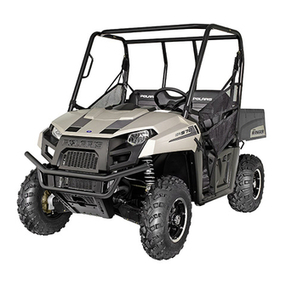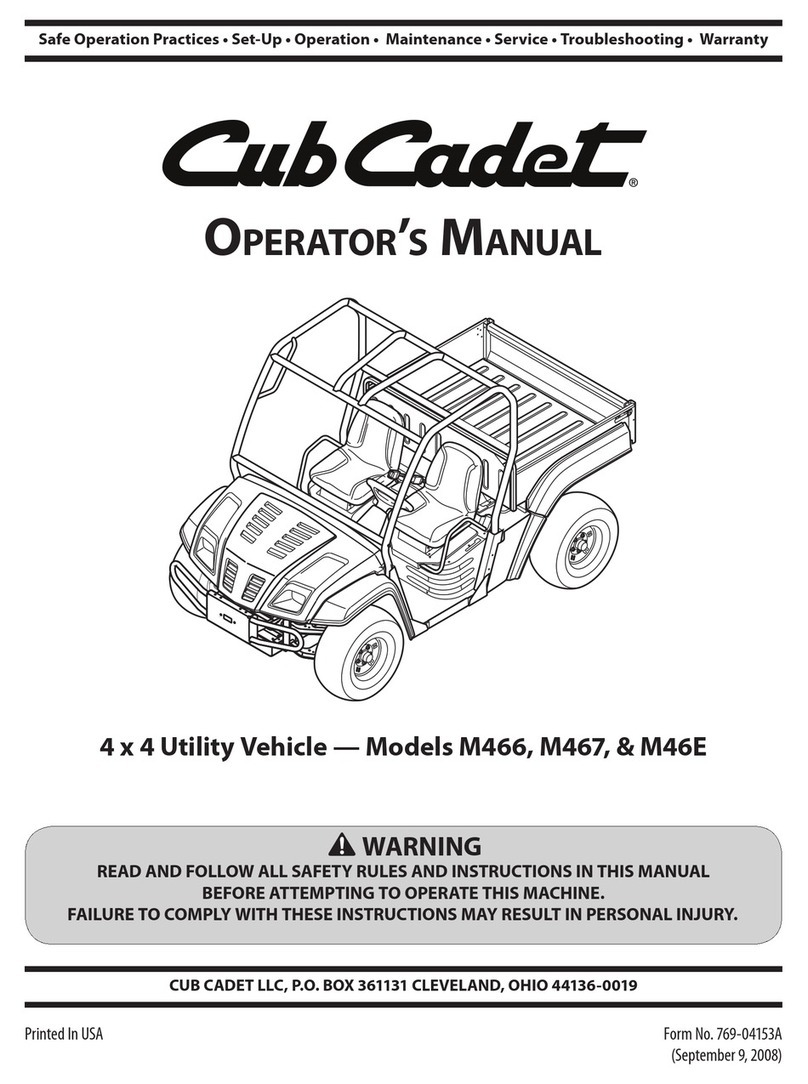Patriot equipment 1010 User manual

OWNER’S MANUAL
1010 HIGH RISE TRAILER
PATRIOT EQUIPMENT, INC
1302 K RD, MINDEN NE 68959
308-832-0220
308-832-1340
www.patriotequip.com
Publication #1 Date: 6/2016

TABLE OF CONTENTS
INTRODUCTION ....................................................................................................................... 1
SAFETY..................................................................................................................................... 2
SAFETY SIGNAL WORDS ........................................................................................................ 2
GENERAL SAFETY GUIDELINES............................................................................................. 3
SAFETY SIGN LOCATIONS...................................................................................................... 4
SAFETY DECAL CARE............................................................................................................. 6
TIRE SAFETY............................................................................................................................ 7
PERSONAL PROTECTIVE EQUIPMENT.................................................................................. 8
BEFORE OPERATION.............................................................................................................. 8
DURING OPERATION............................................................................................................... 9
HIGHWAY AND TRANSPORT OPERATIONS .........................................................................10
FOLLOWING OPERATION.......................................................................................................12
PERFORMING MAINTENANCE...............................................................................................12
LOCKOUT / TAGOUT...............................................................................................................13
REFUELING SAFETY...............................................................................................................15
USE AND CARE TIPS FROM THE FACTORY.........................................................................18
ASSISTANCE...........................................................................................................................18
DIMENSIONS...........................................................................................................................19
PARTS LIST - AXLES...............................................................................................................20
PARTS LIST - GENERAL .........................................................................................................21
PARTS LIST - SPINDLE/HUB...................................................................................................23
WARRANTY REGISTRATION FORM & INSPECTION REPORT.............................................24
LIMITED WARRANTY .......................................................................................................25

1
INTRODUCTION
Thank you for purchasing the 1010 High Rise Trailer. We hope you will get many years of
productive use from it. This trailer is designed to be pulled by a ROPS protected tractor of
proper size. The purpose of this trailer is to provide a means to supply liquid product for your
crops. All product users must read and understand this manual prior to equipment operation.
This manual is considered part of your machine and should remain with the machine at all
times. Do not allow anyone to operate or maintain this equipment who has not fully read and
comprehended this manual. Failure to follow the recommended procedures may result in
personal injury or death or equipment damage.
Information in this manual is designed to help owners and operators to obtain the best results
and safe operation from their investment. The life of any machine depends largely on the care it
is given and we suggest that the manual should be read and understood and referred to
frequently. If for any reason you do not understand the instructions and safety requirements,
please contact your authorized dealer. The intent of this manual is to provide guidelines to
cover general use and to assist in avoiding accidents and injuries.
There may be times when circumstances occur that are not covered in the manual. At those
times it is best to use common sense and contact your authorized dealer or our factory.
The requirements of safety cannot be emphasized enough in this publication. We urge you to
make safety your top priority when using and maintaining the equipment. We strongly advise
that anyone allowed to operate this equipment be thoroughly trained and tested, to prove they
understand the fundamentals of safe operation.
Some photographs, diagrams or illustrations in this manual may show doors, guards and shields
opened or removed to aid in clarity and understanding of a particular procedure. All guards,
shields and safety devices must be in their proper position prior to operation.

2
SAFETY
Read and understand this manual and all safety signs before operating and maintaining.
Review the safety instructions and precautions annually.
TAKE NOTE! THIS SAFETY ALERT SYMBOL FOUND THROUGHOUT THIS MANUAL IS
USED TO CALL YOUR ATTENTION TO INSTRUCTIONS INVOLVING YOUR PERSONAL
SAFETY AND THE SAFETY OF OTHERS. FAILURE TO FOLLOW THESE INSTRUCTIONS
CAN RESULT IN INJURY OR DEATH.
THIS SYMBOL MEANS
-ATTENTION!
-BECOME ALERT!
-YOUR SAFETY IS INVOLVED!
SAFETY SIGNAL WORDS
Note the use of the signal words DANGER, WARNING and CAUTION with the safety
messages. The appropriate signal word for each has been selected using the following
guidelines:
DANGER: Indicates an imminently hazardous situation that, if not avoided, will result in
death or serious injury. This signal word is to be limited to the most extreme situations
typically for machine components which, for functional purposes, cannot be guarded.
WARNING: Indicates a potentially hazardous situation that, if not avoided, could result
in death or serious injury, and includes hazards that are exposed when guards are
removed. It may also be used to alert against unsafe practices.
CAUTION: Indicates a potentially hazardous situation that, if not avoided, may result in
minor or moderate injury. It may also be used to alert against unsafe practices.
NOTICE is used to address safety practices not related to personal safety.

3
GENERAL SAFETY GUIDELINES
Safety of the operator and any bystanders is one of the main concerns in designing and
developing a new piece of equipment. Designers and manufacturers build in as many safety
features as possible. However, every year many accidents occur which could have been
avoided by a few seconds of thought and a more careful approach to handling equipment. You,
the operator, can avoid many accidents by observing the following precautions in this section.
To avoid personal injury, study the following precautions and insist those working with you, or
for you, follow them.
Replace any CAUTION, WARNING, DANGER or instruction safety decal that is not readable or
is missing. Location of such decals is indicated in this booklet.
Do not attempt to operate this equipment under the influence of drugs or alcohol. Do not use
the equipment if alertness or coordination is impaired.
Review the safety instructions with all users annually.
This equipment is dangerous to children and persons unfamiliar with its operation. The operator
should be a responsible adult familiar with farm machinery and trained in this equipment’s
operations. Do not allow persons to operate or assemble this unit until they have read
this manual and have developed a thorough understanding of the safety precautions and
of how it works.
Do not read, eat, drink, talk or text or use a mobile phone while using this equipment.
To prevent injury or death, use a tractor equipped with a Roll Over Protective System (ROPS).
Do not paint over, remove or deface any safety signs or warning decals on your equipment.
Observe all safety signs and practice the instructions on them.

4
Never exceed the limits of a piece of machinery. If its ability to do a job, or to do so safely, is in
question - DON’T TRY IT.
Stay clear of any moving parts, such as shafts, couplings and universal joints.
If adjustments need to be made, make them in small steps, shutting down all motions for each
adjustment.
Do not allow anyone to ride on any part of the equipment for any reason.
Assure that all bystanders are at a safe distance before operating or maintaining this equipment.
SAFETY SIGN LOCATIONS
Safety Sign location is shown below.
SAFETY DECALS AND DECALS

5

6
REMEMBER: If Safety Signs have been damaged, removed, become illegible or parts replaced
without decals, new decals must be applied. New decals are available from your authorized
distributor or factory.
SAFETY DECAL CARE
Keep safety signs clean and legible at all times.
Replace safety signs that are missing or have become illegible.
Replaced parts that displayed a safety sign should also display the current sign.
Safety signs are available from your Distributor or Dealer Parts Department or the factory.
How to Install Safety Signs:
Be sure that the installation area is clean and dry.
Decide on the exact position before you remove the backing paper.
Remove the smallest portion of the split backing paper.
Align the decal over the specified area and carefully press the small portion with the
exposed sticky backing in place.
Slowly peel back the remaining paper and carefully smooth the remaining portion of the
decal in place.
Small air pockets can be pierced with a pin and smoothed out using the piece of decal
backing paper.

7
TIRE SAFETY
Failure to follow proper procedures when mounting a tire on a wheel or rim can produce an
explosion which may result in serious injury or death.
Do not attempt to mount a tire unless you have the proper equipment and experience to do
the job.
Inflating or servicing tires can be dangerous. Whenever possible, trained personnel should
be called to service and/or mount tires.
Always order and install tires and wheels with appropriate capacity to meet or exceed the
anticipated weight to be placed on the equipment.
Tire changing can be dangerous and should be performed by trained personnel using the
correct tools and equipment.
When inflating tires, use a clip-on chuck extension hose long enough to allow you to stand
to one side NOT in front of or over the tire assembly. Use a safety cage if available.
When removing and installing wheels, use wheel handling equipment adequate for the
weight involved.
The rims and tires should be mounted on the feeder with the valve stem to the inside. We
use reverse disc rims as a protection that livestock do not step on the valve stems and
break them off. Be sure you have proper tire pressure and the lug nuts are properly
tightened. Check wheel bearings on a regular basis and grease semiannually.

8
PERSONAL PROTECTIVE EQUIPMENT
Wear protective clothing and equipment appropriate for the job, such as safety shoes,
safety glasses, hard hat and ear plugs.
Clothing should fit snug without fringes or pull strings to avoid entanglement with moving
parts.
Prolonged exposure to loud noise can cause hearing impairment or hearing loss. Wear
suitable hearing protection such as ear muffs or earplugs.
Operating equipment requires the operator’s full attention. Avoid wearing radio
headphones or earbuds while operating equipment.
BEFORE OPERATION
Carefully study and understand this manual.
Do not wear loose-fitting clothing which may catch in moving parts.
Always wear protective clothing and substantial shoes.
Keep wheel lug nuts or bolts tightened to specified torque.
Assure that agricultural implement tires are inflated evenly.
Give the unit a visual inspection for any loose bolts, worn parts or cracked welds, and make
necessary repairs. Follow the maintenance safety instructions included in this manual.
Be sure that there are no tools lying on or in the equipment.
Do not use the unit until you are sure that the area is clear, especially children and animals.
Don’t hurry the learning process or take the unit for granted. Ease into it and become
familiar with your new equipment.
Practice operation of your equipment and its attachments. Completely familiarize yourself
and other operators with its operation before using.

9
Use a tractor equipped with a Roll Over Protective System (ROPS) and fasten your seat belt
prior to starting the engine.
DURING OPERATION
Children should never be allowed on the equipment.
Never carry riders or allow children to operate equipment.
Clear the area of small children and bystanders before moving the equipment.
Securely attach equipment to towing unit, using a hardened 3/4” pin, a metal retainer, and
safety chains if required. Shift towing unit to a lower gear before going down steep
downgrades, thus using the engine as a retarding force. Keep towing vehicle in gear at all
times. Slow down for corners and rough terrain.
Make sure you are in compliance with all local and state regulations regarding transporting
equipment on public roads and highways. Lights and slow moving signs must be clean and
visible by overtaking or oncoming traffic when feeder is transported.
SAFETY CHAIN - If equipment is going to be transported on a public highway, a safety
chain should be obtained and installed. Always follow state and local regulations regarding
a safety chain and auxiliary lighting when towing farm equipment on a public highway. Be
sure to check with local law enforcement agencies for your own particular regulations. Only
a safety chain (not an elastic or nylon/plastic tow strap) should be used to retain the
connection between the towing and towed machines in the event of separation of the
primary attaching system.
Install the safety chain by crossing the chains under the tongue and secure to the draw bar
cage or hitch or bumper frame.
Beware of bystanders, particularly children! Always look around to make sure that it is
safe to start the engine of the towing vehicle or move the unit. This is particularly important
with higher noise levels and quiet cabs, as you may not hear people shouting.

10
NO PASSENGERS ALLOWED - Do not carry passengers anywhere on, or in, the tractor or
equipment, except as required for operation.
Keep hands and clothing clear of moving parts.
Always keep all shields and guards in place and securely fastened.
Do not clean, lubricate or adjust your equipment while it is moving.
When halting operation, even periodically, set the tractor or towing vehicle brakes,
disengage the PTO, shut off the engine and remove the ignition key.
Be especially observant of the operating area and terrain - watch for holes, rocks or other
hidden hazards. Always inspect the area prior to operation.
DO NOT operate near the edge of drop-offs or banks.
DO NOT operate on steep slopes as overturn may result.
Operate up and down (not across) intermediate slopes. Avoid sudden starts and stops.
HIGHWAY AND TRANSPORT
OPERATIONS
Adopt safe driving practices:
Keep the brake pedals latched together at all times. NEVER USE INDEPENDENT
BRAKING WITH MACHINE IN TOW AS LOSS OF CONTROL AND/OR UPSET OF
UNIT CAN RESULT.
Always drive at a safe speed relative to local conditions and ensure that your speed is
low enough for an emergency stop to be safe and secure. Keep speed to a minimum.
Reduce speed prior to turns to avoid the risk of overturning.
Avoid sudden uphill turns on steep slopes.
Always keep the tractor or towing vehicle in gear to provide engine braking when going
downhill. Do not coast.
Do not drink and drive!
Comply with state and local laws governing highway safety and movement of farm
machinery on public roads.
Use approved accessory lighting flags and necessary warning devices to protect operators
of other vehicles on the highway during daylight and nighttime transport. Various safety
lights and devices are available from your dealer.

11
The use of flashing amber lights is acceptable in most localities. However, some localities
prohibit their use. Local laws should be checked for all highway lighting and marking
requirements.
When driving the tractor and equipment on the road or highway under 40 kph (20 mph) at
night or during the day, use flashing amber warning lights and a slow moving vehicle (SMV)
identification emblem.
Plan your route to avoid heavy traffic.
Be a safe and courteous driver. Always yield to oncoming traffic in all situations, including
narrow bridges, intersections, etc.
Be observant of bridge loading ratings. Do not cross bridges rated lower than the gross
weight as which you are operating.
Watch for obstructions overhead and to the side while transporting.
Always operate equipment in a position to provide maximum visibility at all times. Make
allowances for increased length and weight of the equipment when making turns, stopping
the unit, etc.
Pick the levelest possible route when transporting across fields. Avoid the edges of ditches
or gullies and steep hillsides.
Be extra careful when working on inclines.
Maneuver the tractor or towing vehicle at safe speeds.
Avoid overhead wires or other obstacles. Contact with overhead lines could cause serious
injury or death.
Avoid loose fill, rocks and holes; they can be dangerous for equipment operation or
movement.
Allow for unit length when making turns.
Operate the towing vehicle from the operator’s seat only.
Never stand alongside of unit with engine running or attempt to start engine and/or operate
machine while standing alongside of unit.
Never leave running equipment attachments unattended.
As a precaution, always recheck the hardware on equipment following every 100 hours of
operation. Correct all problems. Follow the maintenance safety procedures.

12
FOLLOWING OPERATION
Following operation, or when unhitching, stop the tractor or towing vehicle, set the brakes,
disengage the PTO and all power drives, shut off the engine and remove the ignition keys.
Store the unit in an area away from human activity.
Do not park equipment where it will be exposed to livestock for long periods of time.
Damage and livestock injury could result.
Do not permit children to play on or around the stored unit.
Make sure all parked machines are on a hard, level surface and engage all safety devices.
Wheel chocks may be needed to prevent unit from rolling.
PERFORMING MAINTENANCE
Good maintenance is your responsibility. Poor maintenance is an invitation to trouble.
Proper servicing and adjustments are key to the long life of any implement. With careful
inspection and routine maintenance, costly downtime and repairs can be avoided.
Some parts and assemblies can be quite heavy. Before attempting to unfasten any part or
assembly, arrange to support it by means of a hoist, by blocking or by use of an adequate
arrangement to keep it from falling, tipping, swinging or moving in any manner which may
hurt somebody or damage the equipment.
Always use lifting equipment that is adequately rated to do the job. Never lift equipment
over people.
Make sure there is plenty of ventilation. Never operate the engine of the towing vehicle in a
closed building. The exhaust fumes may cause asphyxiation.
Before working on the equipment, stop the towing vehicle, set the brakes, disengage the
PTO and all power drives, shut off the engine and remove the ignition keys.

13
Be certain all moving parts on attachments have come to a complete stop before attempting
to perform maintenance.
Always use a safety support and block the wheels. Never use a jack to support the
equipment.
Always use the proper tools or equipment for the job at hand.
Use extreme caution when making adjustments.
Never replace hex bolts with less than grade five bolts unless otherwise specified.
After servicing, be sure all tools, parts and service equipment are removed.
Where replacement parts are necessary for periodic maintenance and servicing, genuine
factory replacement parts must be used to restore your equipment to original specifications.
The manufacturer will not claim responsibility for use of unapproved parts and/or
accessories and other damages as a result of their use.
If equipment has been altered in any way from original design, the manufacturer does not
accept any liability for injury or warranty.
If repairs require the use of a torch or electric welder, be sure that all flammable and
combustible materials are removed.
Do not weld or cut on any tank containing oil, fuel or their fumes or other flammable
material, or any container whose previous contents are unknown.
Cleaning solvents should be used with care. Petroleum based solvents are flammable and
present a fire hazard. Don’t use gasoline. All solvents must be used with adequate
ventilation and their vapors should not be inhaled.
LOCKOUT / TAGOUT
Think, plan and check. Think through the entire procedure and identify all the steps that are
required. Plan what personnel will be involved, what needs to be shut down, what guards need
to be removed, and how (and under what conditions) the power will be restarted. Check the
machine over to verify all power sources and stored energy have been identified including

14
engines, hydraulic and pneumatic systems, springs and accumulators, and suspended loads,
Shutoff and lockout power before adjusting, servicing, maintaining, or clearing an obstruction
from this machine. Failure to heed may result in serious injury or death. Communicate with
everyone involved in a repair or maintenance operation, including bystanders, that work is being
done which involves keeping this machine safety at a ZERO ENERGY STATE.
OSHA’s requirements for lockout/tagout are covered in Section 1910.147 of the OSHA
standards. The LOTO standard establishes the employer's responsibility to protect workers
from hazardous energy. Employers are required to train each worker to ensure that they know,
understand, and are able to follow the applicable provisions of the hazardous energy control
procedures:
Proper lockout/tagout (LOTO) practices and procedures safeguard workers from the
release of hazardous energy. The OSHA standard for The Control of Hazardous Energy
(Lockout/Tagout) for general industry, outlines specific action and procedures for
addressing and controlling hazardous energy during servicing and maintenance of
machines and equipment. Employers are also required to train each worker to ensure
that they know, understand, and are able to follow the applicable provisions of the
hazardous energy control procedures. Workers must be trained in the purpose and
function of the energy control program and have the knowledge and skills required for
the safe application, usage and removal of the energy control devices.
All employees who work in the area where the energy control procedure(s) are utilized
need to be instructed in the purpose and use of the energy control procedure(s) and
about the prohibition against attempting to restart or reenergize machines or equipment
that is locked or tagged out.
All employees who are authorized to lockout machines or equipment and perform the
service and maintenance operations need to be trained in recognition of applicable
hazardous energy sources in the workplace, the type and magnitude of energy found in
the workplace, and the means and methods of isolating and/or controlling the energy.
Specific procedures and limitations relating to tagout systems where they are allowed.
Retraining of all employees to maintain proficiency or introduce new or changed control
methods.
OSHA outlines a six-step procedure for controlling hazardous energy:
Step 1: Prepare for shutdown. It must be determined what type of power system is
going to be deactivated including electrical, hydraulic, pneumatic or other energy
sources. Knowledge of shut down methods is necessary.
Step 2: Shutdown the equipment. This should be completed consistent with the
manufacturer’s instructions for the shutdown procedure and could be a simple as placing
a switch in the “off” position or pressing a button.
Step 3: Isolate the equipment. This step involves closing of valves, throwing the main
disconnects or circuit breakers and disconnecting or capping any auxiliary power
sources or secondary electrical systems.
Step 4: Apply the lockout/tagout device. This is done to prevent restoration of the flow of
energy and is done at all disconnect switches, valves or other energy isolating devices.

15
Locks are the preferred method of controlling energy and should be supplemented with tags.
Various lockout devices are available including group lockout hasps. Locks should be
individually assigned and have only one key.
Step 5: Control the stored energy. This step includes the release, disconnect or restraint
of any residual hazardous energy which may be present and a check that all moving parts
have stopped moving. It may also include the installation of “pancakes” or blanking of pipe
flanges, the installation of ground wires to discharge electrical capacitors and the blocking or
supporting of elevated equipment.
Step 6: Verify isolation of equipment. Double-check the steps and verify that the
equipment indeed has been shut down and that the lock and tag do control the stored
energy. Employees should be warned and the system tested, including pressing of all start
buttons to assure that the equipment will not start.
PREPARE FOR EMERGENCIES
Be prepared if a fire starts.
Keep a first aid kit and fire extinguisher handy.
Keep emergency numbers for doctor, ambulance, hospital, and fire department near
phone.
REFUELING SAFETY
Observe usual fuel handling precautions; do not smoke while refueling, do not fill tank with
engine running or while engine is hot. Clean up any gasoline spills. Allow engine to cool before
storing machine inside a building. Keep fuel away from open flame or spark and store machine
away from open flame or spark if there is fuel in the tank. Use extra caution when handling
gasoline and other fuels. They are flammable and vapors are explosive. A fire or explosion
from gasoline can burn you and others and can damage property. Refuel outdoors preferably,
or in well ventilated areas. Never attempt to start engine when there is a strong odor of gasoline

16
fumes present. Locate and correct cause. Store gasoline in an approved container and keep it
out of the reach of children.
Never buy more than a 30 day supply of gasoline. Do not fill gasoline containers inside a
vehicle or on a truck or trailer as interior carpets or plastic truck bed liners may insulate the
container and slow the loss of any static charge. When practical, remove equipment from the
truck or trailer and refuel the equipment with its wheels on the ground. If this is not possible,
then refuel the equipment on the truck or trailer using a portable container and not a gasoline
dispenser nozzle. If a gasoline dispenser nozzle must be used, keep the nozzle in contact with
the rim of the fuel tank or container opening at all times until fueling is complete.

17
MAINTENANCE CHART
ITEM
INTERVAL
Check tire pressure.
Before transporting.
Grease wheel bearings.
Annually
Grease zirk - front wheel assembly.
Weekly during use, before
storage
Review safety instructions.
Annually.
Clean Tank
As needed.
Clean and paint.
As needed.
Inspect fasteners
Before use

18
USE AND CARE TIPS FROM THE FACTORY
1. Keeping the 1010 High Rise Trailer cleaned and painted will help to prolong the
usefulness of this product.
2. Failure to clean the 1010 High Rise routinely may cause a buildup of fertilizer or
chemical residue which may cause corrosion and lead to failure of fasteners.
3. Patriot Equipment recommends checking the tires and fasteners before each use.
4. Clean the tank with water when finished for the season to prevent buildup of fertilizer or
chemical residue.
5. Be sure to drain the tank and connected hoses after the final tank cleanout to be sure all
the water is out to prevent any damage from freezing temperatures.
6. When not attached to the tractor, turn the front wheels at a 90ºangle or chock the
wheels to prevent a roll away. Park this feeder in a level area if possible.
7. Grease the zirk fitting under the front wheel assembly and the pivot points on the hitch
assembly weekly and when the trailer is to be stored at the end of the season.
ASSISTANCE
If you have questions not answered in this manual, or require additional copies, or the manual is
damaged, please contact your dealer or:
Patriot Equipment (Minden Machine Shop, Inc)
PO Box 356
1302 K Rd
Minden, NE 68959
Phone: 1-308-832-0220
Fax: 1-308-832-1340
Larry@mindenmachine.com
Table of contents
Popular Utility Vehicle manuals by other brands

BERG
BERG Extra Theme user manual
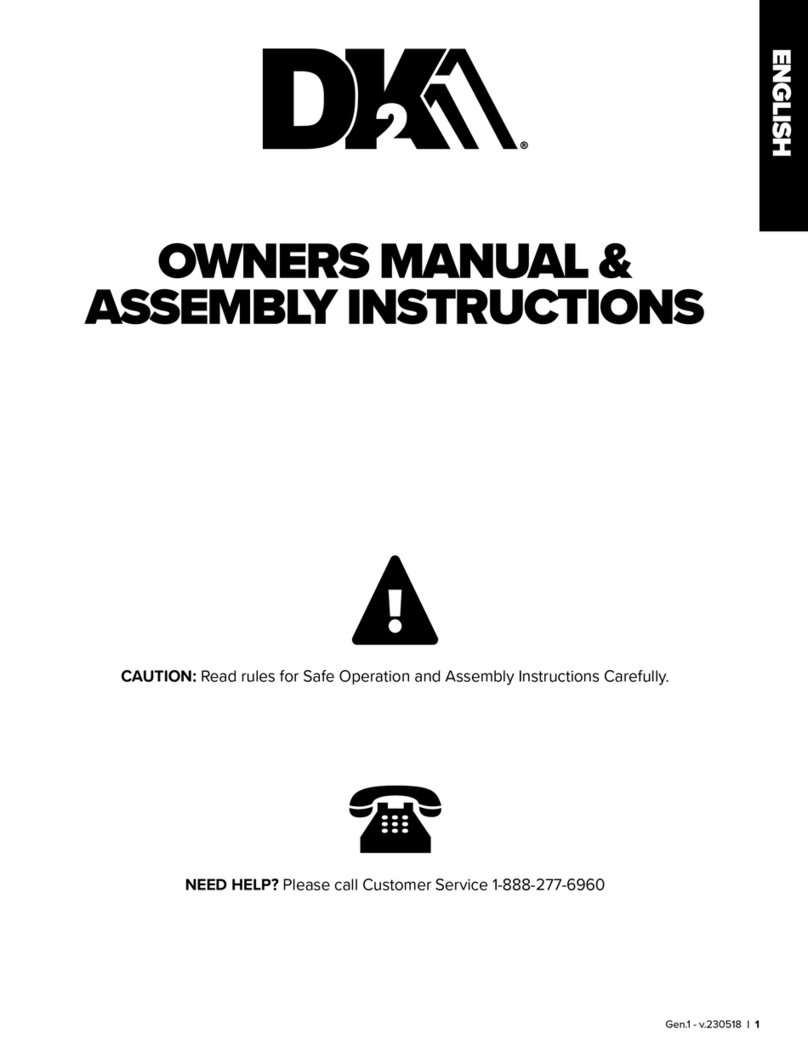
DETAIL K2
DETAIL K2 MMT-ATV Owner's manual & assembly instructions

FarmTek
FarmTek 103864 quick start guide
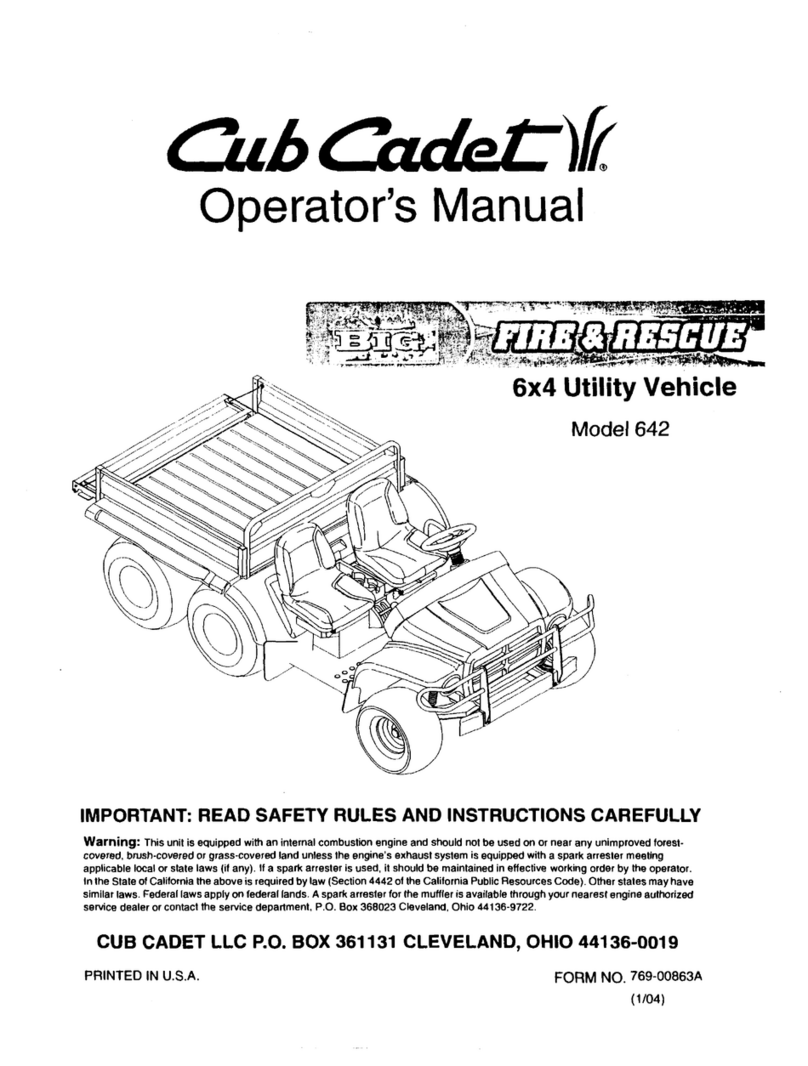
Cub Cadet
Cub Cadet Fire & Rescue 642 Operator's manual
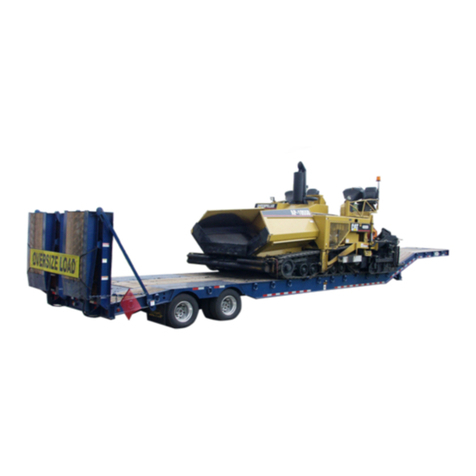
Etnyre
Etnyre PAVER SPECIAL RPS Series Parts and operation manual
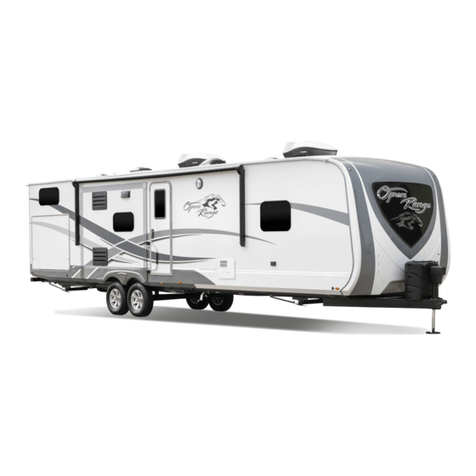
Open Range
Open Range Toy Hauler owner's manual
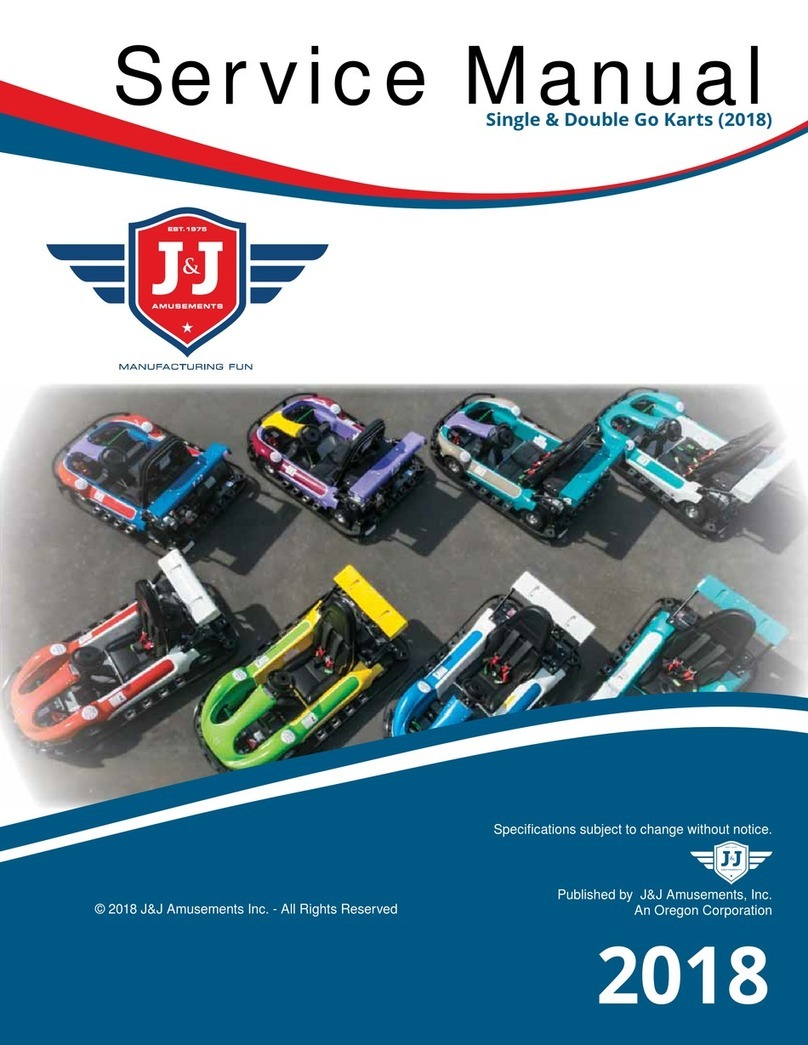
J&J Amusements
J&J Amusements King Scorpion Service manual
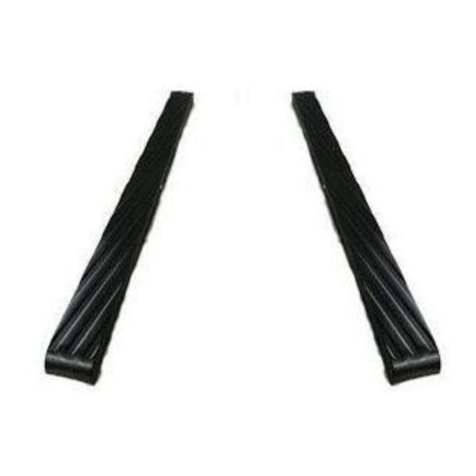
TIE DOWN
TIE DOWN LongRun 86162 installation instructions
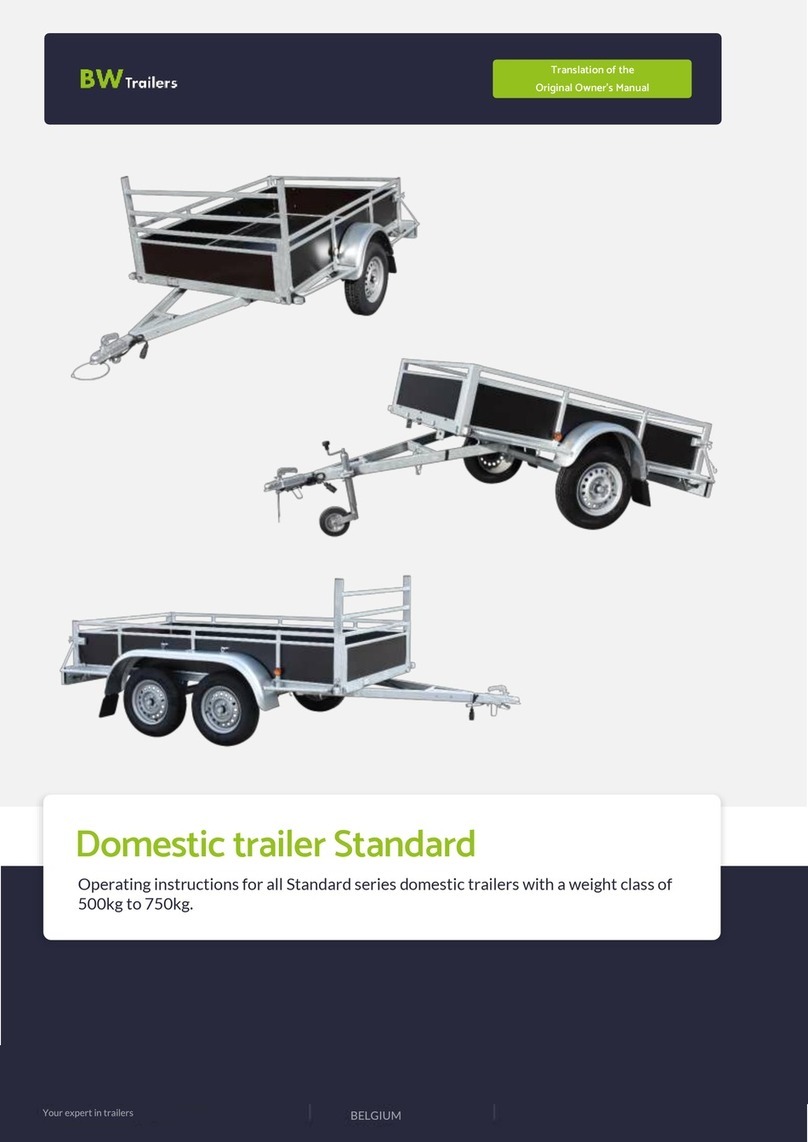
BW Trailers
BW Trailers Domestic trailer Standard operating instructions
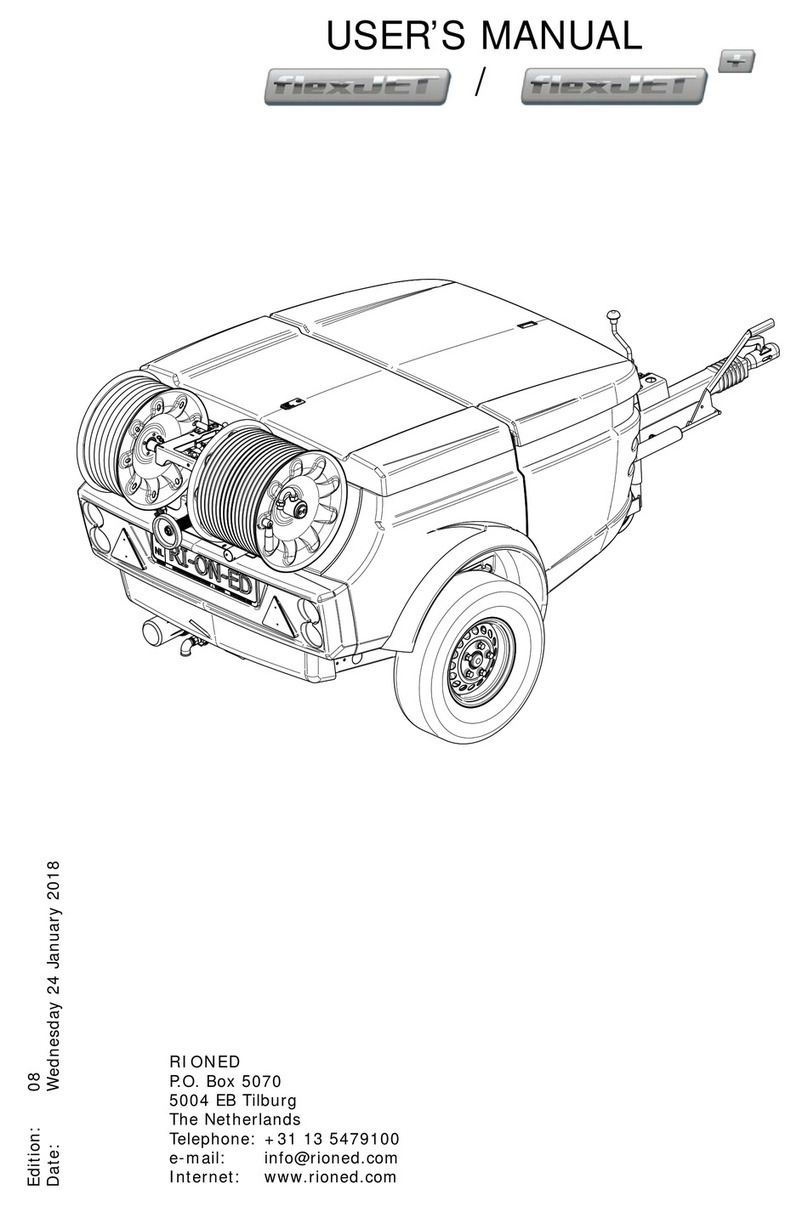
Rioned
Rioned flexJET+ user manual
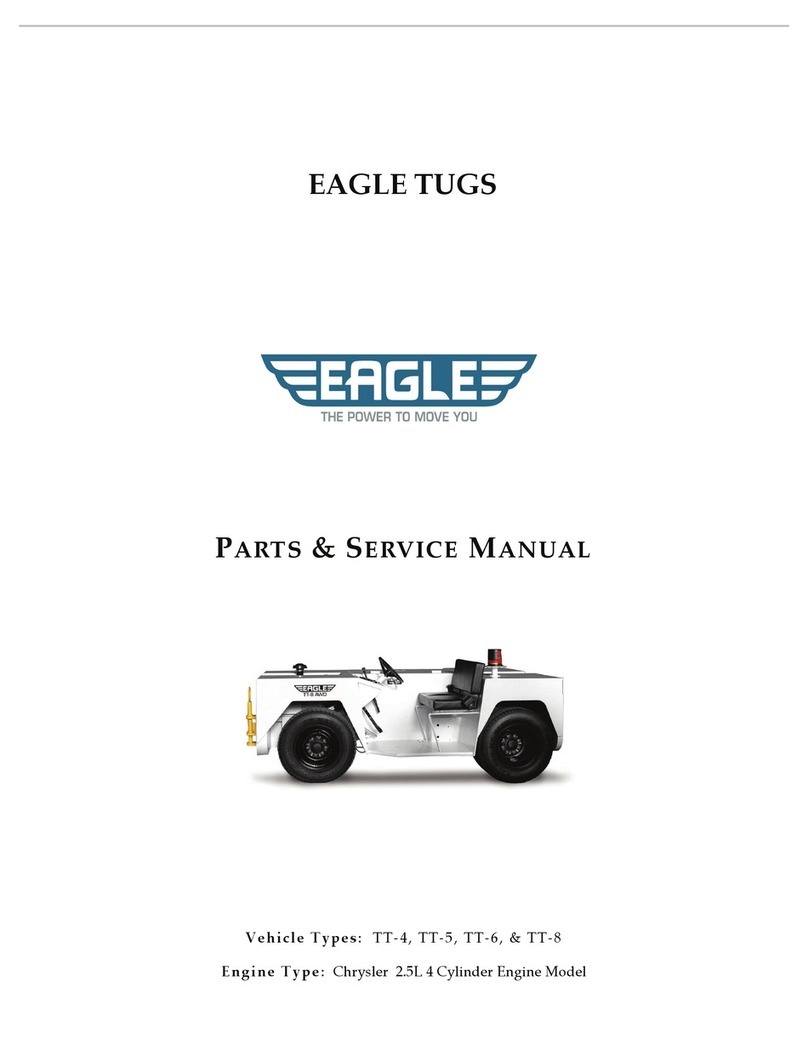
Eagle
Eagle TT4 Parts & service manual
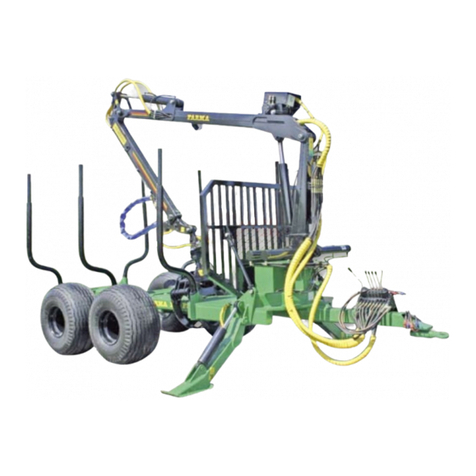
FORS MW
FORS MW FARMA T 14 4WD Instruction book
